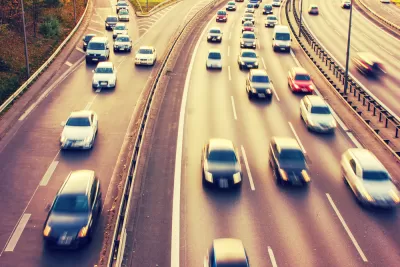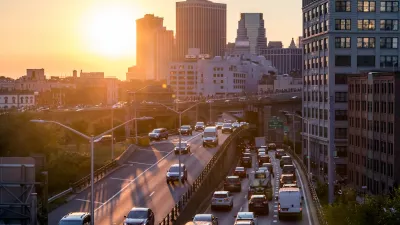Congestion pricing is an economic tool for a difficult, complicated problem, and must be calculated carefully to avoid unintended consequences.

Adam Milsap shares news of a new paper by Jeffrey Brinkman that serves as a reminder of the world's complications, especially with regard to congestion and agglomeration economies.
For those unfamiliar with the latter term, Milsap defines agglomeration economies as "the benefits that occur when firms and workers are in proximity to one another." Importantly, agglomeration economies are a behavior commonly found in firm clusters and cities.
While taxing activities that generate negative externalities and subsidizing activities that generate positive externalities is economically sound, calculating the appropriate tax or subsidy is often difficult in practice. The key problem, according to Milsap: "Since congestion is a result of the high population density that is also associated with agglomeration economies, there is tradeoff between the two."
So Jeffrey Brinkman's paper, published in the Journal of Urban Economics, argues:
…if city officials ignore the positive effect of agglomeration economies on productivity when calculating their congestion taxes they may set the tax too high. Overall welfare may improve even if the tax is too high (it depends on the size of the DWL when no tax is implemented) but society will not be as well off as it would be if the positive agglomeration effects were taken into account.
FULL STORY: Congestion taxes can make society worse off

Maui's Vacation Rental Debate Turns Ugly
Verbal attacks, misinformation campaigns and fistfights plague a high-stakes debate to convert thousands of vacation rentals into long-term housing.

Planetizen Federal Action Tracker
A weekly monitor of how Trump’s orders and actions are impacting planners and planning in America.

San Francisco Suspends Traffic Calming Amidst Record Deaths
Citing “a challenging fiscal landscape,” the city will cease the program on the heels of 42 traffic deaths, including 24 pedestrians.

Defunct Pittsburgh Power Plant to Become Residential Tower
A decommissioned steam heat plant will be redeveloped into almost 100 affordable housing units.

Trump Prompts Restructuring of Transportation Research Board in “Unprecedented Overreach”
The TRB has eliminated more than half of its committees including those focused on climate, equity, and cities.

Amtrak Rolls Out New Orleans to Alabama “Mardi Gras” Train
The new service will operate morning and evening departures between Mobile and New Orleans.
Urban Design for Planners 1: Software Tools
This six-course series explores essential urban design concepts using open source software and equips planners with the tools they need to participate fully in the urban design process.
Planning for Universal Design
Learn the tools for implementing Universal Design in planning regulations.
Heyer Gruel & Associates PA
JM Goldson LLC
Custer County Colorado
City of Camden Redevelopment Agency
City of Astoria
Transportation Research & Education Center (TREC) at Portland State University
Jefferson Parish Government
Camden Redevelopment Agency
City of Claremont





























